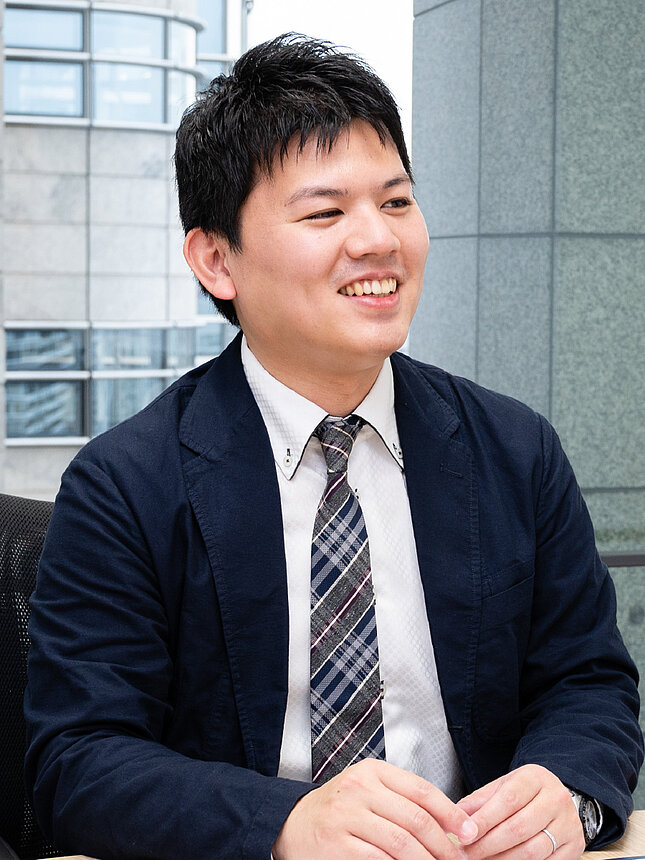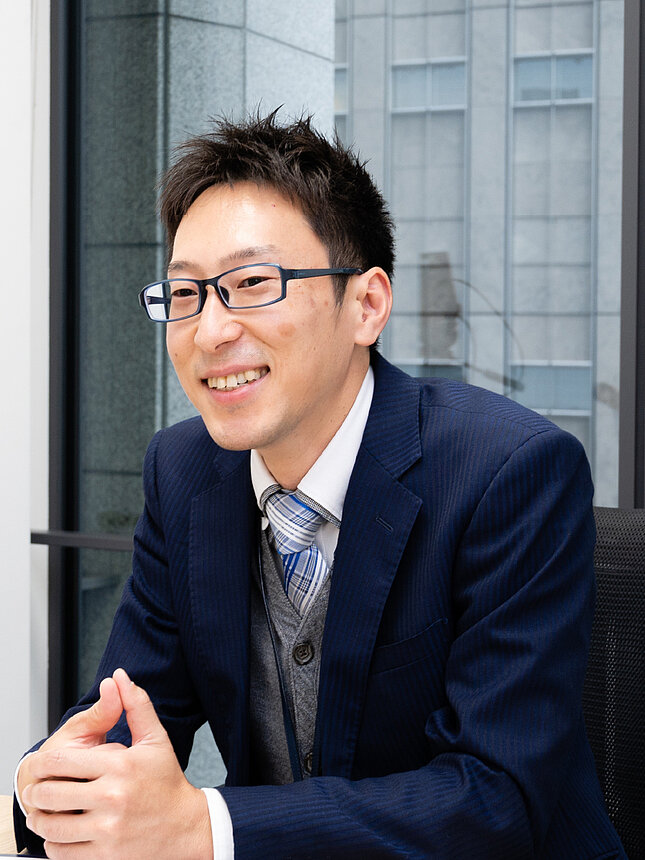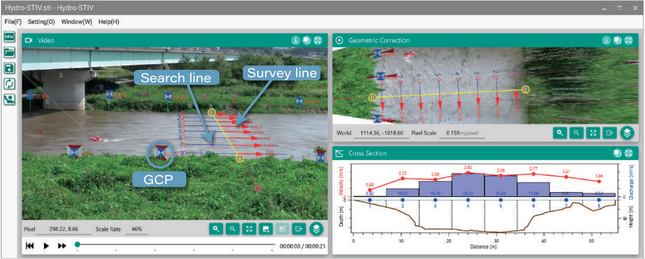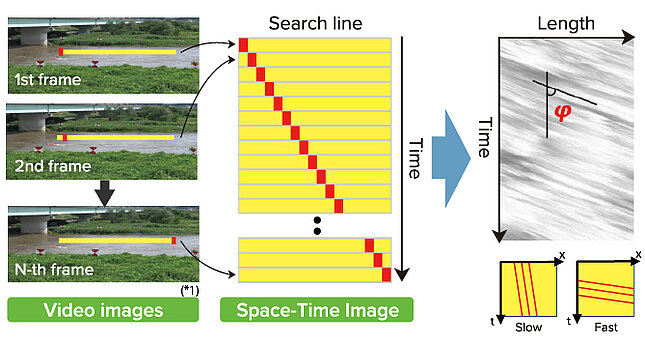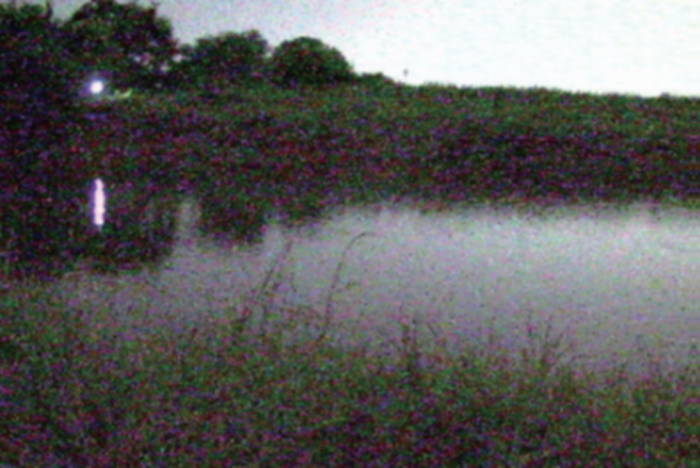The Hydro Technology Institute develops systems at the heart of which are advanced numerical analysis and cutting-edge AI technologies to measure river flow and velocities via video. The institute uses EIZO's SSZ-9700 ultra-high sensitivity HD video camera to closely monitor rivers at night. We asked them what the deciding factors were in their purchase and what their experience has been with the camera.
Reference
Hydro Technology Institute
Clear camera images for measuring river flows at night
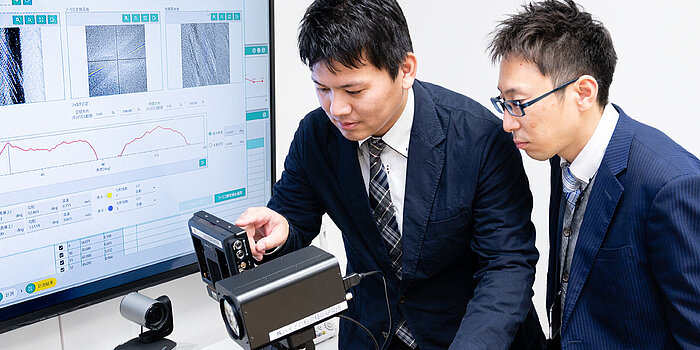
Hydro Technology Institute interview
Tell us something about your company
Tsuji: The Hydro Technology Institute was established in March 2000. We primarily provide information system technology services for disaster management and civil engineering, using numerical analysis and specialized technologies. Our main customers include national research institutes, universities, and private companies. What makes us unique is that we work closely with university researchers in Japan and abroad to apply numerical analysis models, based on the latest research results, to practical applications.
As for the actual work, we mainly provide numerical analysis and system design services. The numerical analyses we do for rivers include water flow analysis, bridge pier loading simulation, and debris flow simulation. We also simulate all sorts of other natural phenomena - for harbors, we can simulate wave action such as tsunamis, storm surges, and high waves, as well as sediment movement. We can also simulate environmental conditions such as water quality and wind, as well as the effects of seismic activity on structures. As part of flood mitigation efforts, we create damage estimates based on flood simulations and then create hazard maps that can be used in the event of an evacuation. This helps communities better manage flooding situations caused by extremely heavy rainfall, which has become more frequent and severe in recent years.
We build systems that are tailored to our customers' needs. In particular, for comprehensive disaster response, we provide national and local authorities with disaster response systems that combine our expertise in numerical analysis and information systems. In addition, we provide technical support for emerging technologies such as AI, image analysis, Big Data processing, and supercomputing. We also provide 3D visualization technologies that can be used in disaster management education programs, such as CG simulations of disasters, AR-based hands-on disaster simulations using smartphones or tablets, and VR-based imagery using head-mounted displays.
Hydro-STIV
Tell us about your flow and velocity measurement software?
Tsuji: Hydro-STIV is a system that measures the flow rate and velocity of rivers using video images and water level information. By combining the latest STIV* technology, developed by Professor Emeritus Ichiro Fujita of Kobe University, with our proprietary AI technology, it achieves incredibly accurate measurements. Previously, to measure the flow rate of a river, swimmers had to be dropped from a bridge and then used a stopwatch or timer to measure the time it took them to travel. However, this meant that if a flood was caused by a typhoon, an on-site observation would have to be made, even in the middle of the night, creating a serious safety issue. With Hydro-STIV, measurements can be made using camera images to measure flow rate and velocity with high accuracy from a safe location, even during flooding or other hazardous conditions.
.
*Space-time image velocimetry, a technique for measuring the surface velocity of rivers and other bodies of water based on video recordings
.
EIZO SSZ-9700 in use
Why did you choose this ultra-high sensitivity camera?
Tsuji: The main purpose of monitoring river flows is to determine the flow rate, likelihood of flooding and other data when rivers swell due to heavy rainfall. This, in turn, can be used to understand the upper limits of what these rivers can or must handle. This information is also used to predict flooding and improve river infrastructure. This means that it is imperative to take measurements when it rains, especially when floodwaters reach their peak. However, flows often peak at night, and so it is important for the camera to capture clear video for measurement under these conditions. Of course, in such situations, the rivers become extremely dark, and ordinary cameras are not able to capture video that we can use for measurements, In our search for a better solution, we came across EIZO's ultra-high-sensitivity camera.
Minami: We sometimes use video from far-infrared cameras for nighttime measurements, but far-infrared cameras are expensive, hard to get, and don't have very high resolution. So the resolution is not enough to measure the water surface from a distance. With conventional cameras, we could take images at night with extensive lighting equipment, but that is not always feasible depending on the environment. We felt that EIZO's ultra-high resolution camera could be a solution to this problem.
What effects did it have after installation?
Minami: For measurements using video footage, it is important to capture the flow of the river surface, but without some kind of lighting equipment at night, conventional cameras can only capture pitch black video. During a test run with the high-sensitivity EIZO camera, we found that we could capture even the finest movements on the river surface in the dark. In other words: We were able to capture the kind of video we needed to measure flow velocity. Thanks to the full HD video resolution and built-in zoom lens, we can measure wide rivers or place the camera farther away, making Hydro-STIV more versatile.
Tsuji: We receive many requests from customers for video recording at night. By being able to offer suggestions and specific advice on optimal viewing conditions, such as how dark an environment can be for an ultra-high-sensitivity camera to capture video, we have gained the trust of our customers.
Night shot
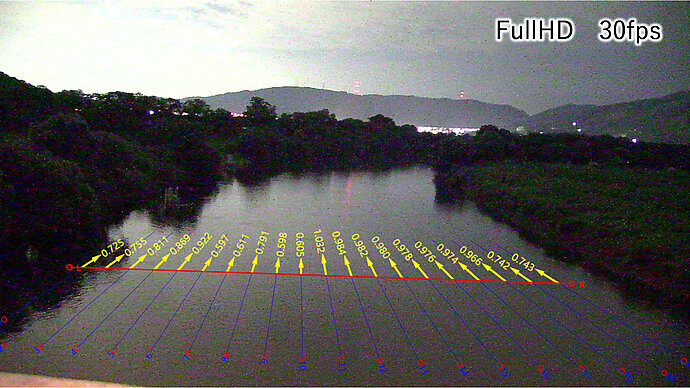
Example of flow velocity measurement using video recordings from the SSZ-9700 high-sensitivity camera.
Flow and flow velocity measurement systems
What are the future prospects for your company in this area?
Tsuji: Our Hydro-STIV is designed not only to ensure the safety of the people taking the measurements, but also to contribute to the safety of the surrounding communities by providing important information. In our daily lives, we rarely pay attention to the flow rate or velocity of rivers, but these daily measurements contribute to the safety of us all. As we did with EIZO's high-sensitivity camera, we will continue to work to improve the system by using the latest technologies to make it even easier to use, and ultimately contribute to a safer society where the condition of rivers can be accurately monitored anytime, anywhere.

About the Hydro Technology Institute
Hydro Technology Institute Co, Ltd. combines advanced numerical analysis technology with cutting-edge information and communication technology to provide comprehensive solutions in the fields of social infrastructure, disaster management, environmental protection and science. In addition to its headquarters in Osaka, the company maintains branch offices in Tokyo and Kyushu and conducts joint research in cooperation with leading universities in Japan and overseas, as well as other research institutions.
